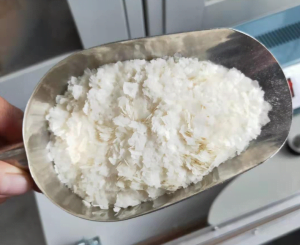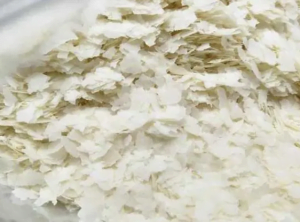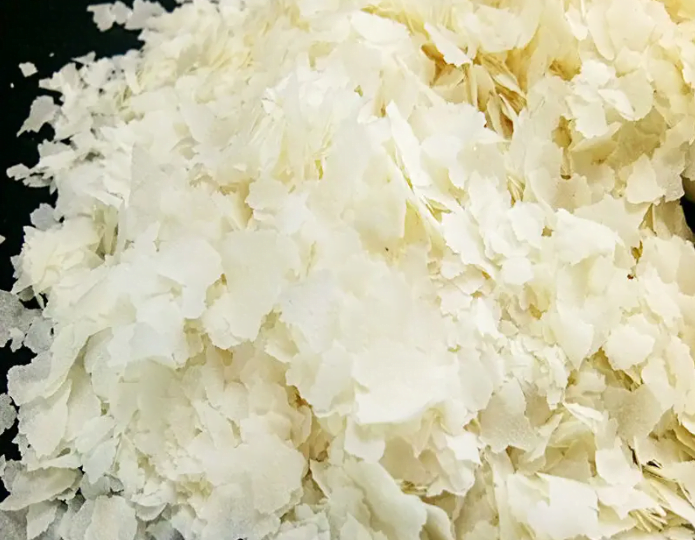Potato flakes are the final product obtained after processing fresh potatoes through a series of steps including cleaning, peeling, steaming, mashing, and drying.
Essentially, potato flakes can be considered a type of dehydrated potato product. They appear as small snowflake-like flakes, mainly in white and yellow varieties, and there are also purple potato flakes processed from purple potatoes.
As a professional in the production and use of potato flakes, let me introduce you to this product from various perspectives.

As a type of dehydrated potato product, what makes potato flakes special?
The processing technology
There are many types of dehydrated potato products commonly seen in supermarkets, such as dehydrated potato chunks and slices. Generally, dehydrated potato chunks and slices are produced using freeze-drying techniques, but the dehydration process for potato flakes is completely different.
The core of potato flake processing is large drum drying. When potato mash is dried in large drums, potato flakes resemble neatly arranged sheets of paper, which are then broken into flakes. Due to the requirement for large drum drying, potato flake factories are typically of considerable scale.
Want to learn more about potato flakes processing, please check my article:
What Are Potato Flakes? How Are Potato Flakes Made?
The Main Uses
I dare say you’ll find it difficult to directly purchase potato flakes in any supermarket, as they are primarily an intermediate product in food production. For example, flavored mashed potatoes, composite potato chips, and various biscuits all use potato flakes as ingredients.
Why use potato flakes as a food ingredient?
- Depending on the amount used, potato flakes impart varying degrees of natural potato flavor and contribute to the texture of food, making them a crucial ingredient.
- During baking, potato flakes undergo the Maillard reaction, creating a barbecue-like color that enhances the appeal of baked goods, stimulating appetite.
- Potato flakes boast high nutritional value because they are a dehydrated product that preserves a significant portion of the potato’s nutrients, including vitamins. Comparatively, their nutritional content is akin to that of apples.
The Most prominent feature
Perhaps unknown to many, the standout feature of potato flakes isn’t just their taste and nutritional value but a physical characteristic—their exceptional rehydration ability.
If you pour 100 grams of water into 20 grams of potato flakes, within 1-2 seconds, the flakes will absorb all the water, transforming into mashed potatoes.
So, what’s the use of this strong rehydration ability?
- Many people use potato flakes as an ingredient in fishing bait. When the bait is immersed in water, the rapid rehydration of potato flakes quickly disperses the bait’s flavor, attracting fish from afar. Therefore, consider using potato flakes next time you go fishing.
- Another popular use is in mashed potatoes, where the rapid rehydration capability of potato flakes allows for quick and easy preparation of delicious mashed potatoes. Of course, many other food products also utilize this characteristic.
Classification of potato flakes
Product Appearance:
- There are mainly two types: potato flakes and milled potato flakes.
- Potato flakes are primarily used in the production of food and snacks, while milled potato flakes, ground to a fineness of 80 mesh or finer, are used in producing seasoned mashed potato powders and staple potato dishes.
- There’s no significant difference between the two types; milled potato flakes are simply a finer version of potato flakes.
Color classification:
Potato flakes generally come in white, yellow, and purple varieties, with varying intensities of color depth due to the different types of fresh potato raw materials used. refer to my article:
Potato Flakes | What Potato Varieties are used for the production?
Origin classification:
The main regions producing potato flakes worldwide include Europe, North America, Russia, and China, each with distinct characteristics primarily influenced by the types of potatoes used.

How to choose potato flakes?
You should consider several important factors when selecting potato flakes:
Besides the methods I mentioned here, there is the China National Standard of Potato Flakes as a reference for the quality of potato flakes.
The latest National Standard for Potato Flakes in China in 2024 (effective from May 14th)
Appearance:
Check for any dark spots or discoloration in potato flakes. Higher purity indicates better raw material quality.
Rehydration capability:
Conduct a simple test by mixing potato flakes with water in a 1:5 ratio to observe how quickly they absorb water. Faster absorption indicates higher-quality potato flakes.
Starch in potato flakes:
It requires specialized equipment or reagents for measurement, with lower starch content indicating higher quality potato flakes. For more details on this relationship, refer to my article:
What Are The Differences Between Potato Flakes and Starch?
Brand of potato flakes:
Due to the high production requirements, only large-scale factories can manufacture potato flakes. It’s advisable to choose reputable brands known for producing high-quality potato flakes. In China, options include XION, Hongji, and Xuechuan, among others. For more information, refer to my article:
Top 10 Potato Flakes Manufacturers in China
Author Summary
The above content summarizes some foundational aspects of potato flakes production and application, from the perspective of a professional in the field. I hope to engage in further discussions with you. Feel free to contact me anytime for questions related to this topic.
